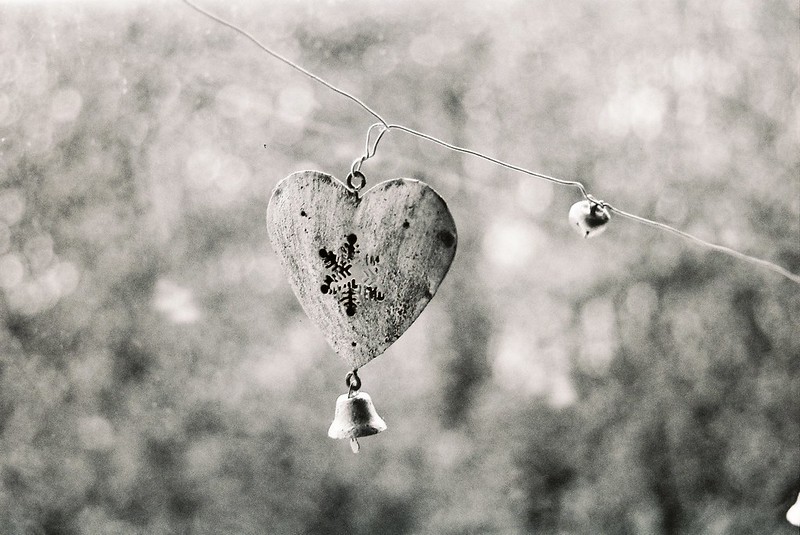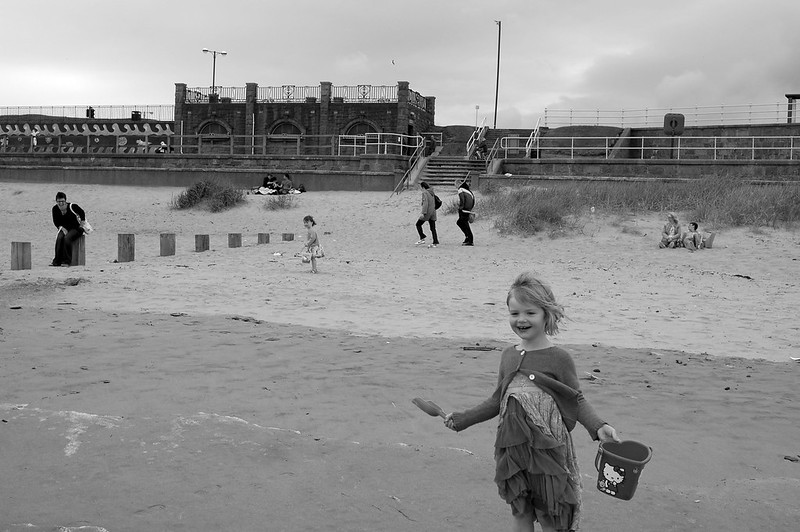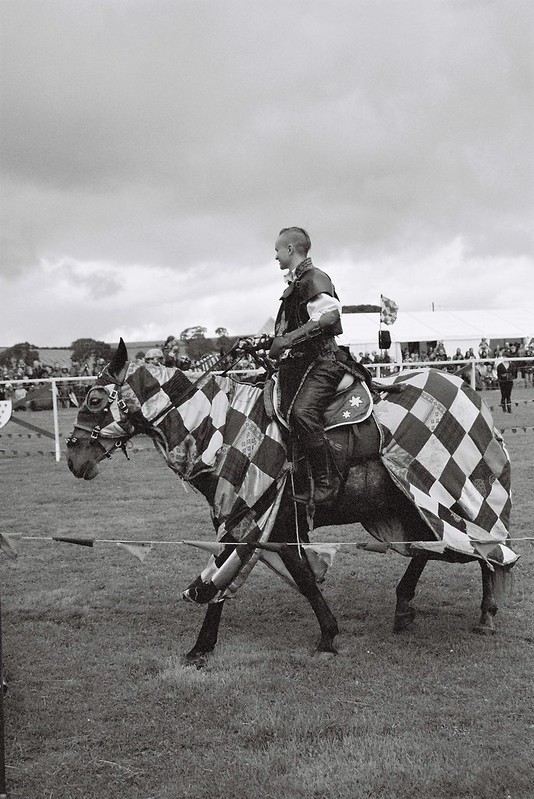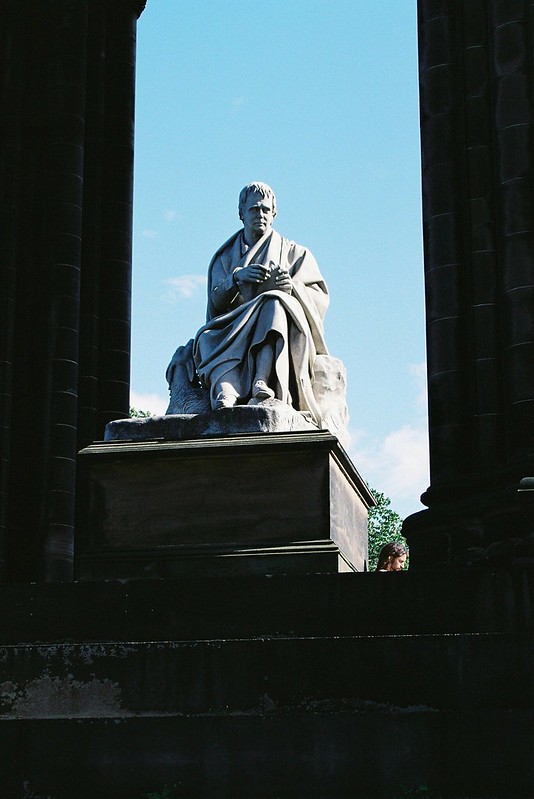In both film and digital land there’s some bargains to be had in the second hand market. This blog like many has focused on the bargains to be had in the analogue world but few discuss older digital cameras in the same way (a notable exception being our sometimes guest writer Dan James over at his 35hunter blog). But can you make a real comparison ?
Well here’s my attempt !
This blog is film based but this post takes us a little off track. I do shoot digital as well and in the past couple of years have done quite nicely picking up, using and reselling some CSC gear all of which I got for fairly cheap prices.

But CSC stuff really is a product of the last decade and benefited from a decade of digital advances making it in many ways an unfair comparison to turn of the century film spec. But go back into the time and you can make a more spec matching comparison. In fact thanks to Kodak’s DSC series you can actually compare the film camera the DSC model was based on. But these are high end cameras so comparing the likes of Nikon F5 isn’t going to be in the reach of you thrifty bunch. Also with the exception the latter pro models these are pretty bulky beasts.
A bit of history
But we can compare more budget models. Nikon launched the F55 (aka the N55) in 2002. It turned out to be one of the last new Nikon SLR models made and by 2006 it was discontinued with almost all other film based Nikon SLRs. However it was still on the market when Nikon launched D50 in 2005. This was Nikon’s first DSLR aimed at the lower end consumer market and was replaced just a year later by the D40.

So Nikon’s last budget Film SLR v their first budget dSLR (the choice was also based on the fact that I’ve owned a D50 since new and have a F55).
Lets get down to business.

Paint it Black…. or not – Styling
You can tell instantly these are cameras of the same era and from the same design team. The D50 in many ways resembles the F55 in layout abet on steroids. It dwarfs its film brother and weights in at almost 200 gms heavier. Both cameras were available in the now naff looking silver and black as picture but only the D50 was sold as an all black model (unsurprisingly it sells for more).
Both have right sided handgrip. The D50 grip is wider and better suited to hand but its heft makes the F55 much easier to wield one handed. On the grip is shutter button and on of switch with the a couple buttons and then the LCD screen. On the back a they both have a jog dial over on the left.

The back of the D50 has a 2″ LCD screen for post shot review and related menu controls. It doesn’t offer live preview like later dSLR but this is typical for a pre-video capable dSLR.
There is data back version of F55 (F55D/N55D)
Both a re starting to suffer from sticky plastic syndrome around the hand grip. Then there’s the lens mount. Notice something different ? Yup the F55 has a plastic one (yikes ! more on that later)
Ergonomic and controls
It becomes rapidly apparent that the D50 is a tad more luxurious here. I’m not taking just talking about the LCD screen and the menu options it provides. There’s just a few more buttons here including a exposure and focus lock and burst shot button. That said the F55 has an easier to use bracket button.
The diopter adjustable viewfinders are remarkably similar in what LED info is displayed re shutter aperture and flash status etc. they are pretty reasonably by SLR standards. The D50 on the focus screen highlights which focal point is selected allowing to adjust on the joy pad by the LCD

The F55 is a bit more of a fanckle to set for AF zone. You’ll need to hold down the focus mode button and turn the thumbwheel, although you can do this outwith using the viewfinder
Both have a similar command wheel with the usual Auto, PSAM and photo modes. These are broadly the same with portrait, landscape, night portrait, sports and close up modes but the D50 also has a children’s mode. Whilst for both models in these modes changes to setting like AF kick in worth noting the D50 ends up processing the image captured with often different colour processing.
The dSLR has more info on it’s screen but much of this relates to File size and colour balance.
Neither has DoF preview button or cable point. Both have self timers and the D50 can use a IR controller.

Under the hood
Although these cameras were sold at the same time, the D50 has on paper a technological edge.
Both cameras use Nikon 3D matrix system for metering. The D50 has a better more advanced unit that is the next model on from the legendary F5’s. Its the same story with AF. Both have multipoint TTL Autofocus with low light lamp assist. Again the F55 makes do with a more basic CAM-530 AF model which offers 3 focus points to the 5 of the D50’s CAM-900. Both offer continuous and single point AF too.
You might think this means the D50 focuses and exposes better. whilst it is true the tech is better for most of this the difference is gonna be marginal.
The D50 has a faster shutter (1/4000 v 1/2000) and has a marginal more powerful built in TTL flash (GN15 v12). It also uses bulky but rechargeable Lithium batteries compared to the disposable lithium batteries of the F55. The D50 also supports some mountable speedlights with TTL, the F55 doesn’t.

Lens compatibility
Remember the plastic lens mount ? Well see Nikon were aiming the F55 at folk who wouldn’t want or could afford big heavy pro lenses. So no need for a robust lens mount. equally it was no need for those new high end AF-S lens.
This makes the F55 a bit shackled. Whilst it will mount most AI class F mount lens, it is only capable of full operation with AF-D class lens and the G class lenses. It will mount and meter newer AF-I & AF-S lenses but won’t be able to AF focus them. However it does allow provide rangefinder assist for focusing. The D50 can and was the only cheap Nikon dSLR to do so (weirdly its successor the D40 lost the ability to use older AF-D lenses). The F55 doesn’t seem to work with DX lenses (i can manually focus but it doesn’t seem to be able to manage the aperture.

Both work with older AI manual focus lenses with rangefinder assist (just as well as neither has viewing screen that makes manual focusing that easy). They can’t meter these but you can set to manual and adjust the shutter in camera and the aperture on lens.
Media Issues
So far the D50 has been ticking more boxes but it falls on its face here. The D50 shoots 6MP in RAW +/or JPEG format. That’s just about enough for a 300DPI 10×7″ print (more if you can tolerate a lo-fi 150DPI).
So how does it compare to film ? Truth is we don’t really make a direct comparison as it actually depends on how good the scanned image is. But in 2008 Ken Rockwell calculated if you use Fujifilm Velvia 50 you’d get a effective resolution of 175MP. Of course as he points out you’d need a darn good scanner to catch that but consumer scanners now reach 7200dpi and beyond. A 5400dpi scan of a 35mm negative works out as up to 120MP !

You of course get a choice of films ( the F55 supports 25-5000 ISO). The F55 loads the film out first meaning you shoot the roll in reverse and if you open the back by accident your shots should be in the can.
The D50 obviously uses removable and reusable SD media. The cost implications are quite stark. Although SD memory can eventually fail I’ve used the same 3 cards for over a decade without issue. Standard SD media is a bit old hat but new cards are still made but you’ll pay a slight premium (a 16Gb SDHC card is usually cheaper than a 1Gb SD). When the camera was made it was assumed 1Gb would be the upper SD standard. I’ve used a 2Gb card for years but the camera can get confused as to available space with this larger card (still stores okay).
You can also change the colour setting in use.
sensor tales
It also has a cropped DX sensor (aka APS-C) using CCD technology. Although CMOS sensors are now becoming common in dSLR and CSC the tech in 2005 favoured the CCD. That said it was well reviewed at the time as this DPReview and Ken Rockwell’s more nuanced review show.
Ken also got a F55 for his Mum and his review of it is handy as I’ve struggled to find a review from when it was on the market bar this one from Shutterbug. Broadly the take home when comparing it to more high end Nikons was yes it was more limited but for most users it’s the glass that counts not the body.

In use
The F55 is lighter by some margin and quite easily shot one handed, Although has less features has one advantage with the easy set bracket mode. However the grip is not as good
Although the D50 has better internal specs in terms of focus and metering for most users the gains will be marginal if any. Folk still take great shots using a full manual focus non metered SLR like the original Nikon F.
Both despite there advances can struggle to lock on fast moving target unless you set up right. Neither has a cable point which is a pain but at least you can by a cheap IR controller for the D50. Beyond that they feel broadly the same in use abet if you must fiddle with things like colour balance, the dSLR gives you many more options.
Results
I’ve deliberately not labelled each shot by a number not the camera. I want to challenge you to work out what was shot on film and what was shot on digital on the image shown. There’s a grayscale rendered D50 shot or 2 in as well just to mix things up and some of the film stuff is scanned notionally at not much higher than 6MP. The camera details are at the bottom of the page.
Overall I find things are quite good between the cameras provided you’re not blowing things up. The D50 tones are usually okay but are biased to landscape unless in portrait or kids mode. The colour palette of the F55 is down to the film and processing (both lab and after). Bigger prints will favour the film camera as you’d expect.
Both cameras are reasonably good for estimating exposure. If you look over hundreds of images the D50 gets it marginally more right but again processing does have an impact. I didn’t notice a any overall focus advantage.
Cost
The last 5 sold (L5S) D50 bodies with battery, charger but no lens on eBay averaged £42.76GBP on the 28/08/2018*. That L5S isn’t a bad guide price. The L5S for the F55 body was £11.30 inc postage but that did include one that sold for just 99p before P&P and one that sold for £20.
For comparison sake the D40 body worked out as a L5S of £68.39 (more lens crippled but slightly technologically advanced than the D50). On the film side, the F65 was the slighter higher spec consumer film model sold alongside the F55 with notably better lens support. Its L5S is £17.47 inc P&P.

Conclusions
This is an interesting fight and its narrow decision. In reality it will come down to to if you want a bargain film or digital dSLR. The D50 is technically that bit more able in all field bar its sensor but those gains are marginal over the F55. It will have cheaper running costs too with rechargeable batteries and re-usable media.
But its’s the sensor. It’s small & dated in both size and pixels. It’s fine for hand prints but forget if you want to blow your shot up. It doesn’t off the killer app that dSLR went on to offer video (that had to wait until the D90). that said if you’re in for still for small prints and the web, ain’t anything wrong here and this the cheapest second hand dSLR from Nikon.
The F55 wins easily then ? Well, its a fraction of the cost (yes you can buy for a quid and get change but only on good day) and hell of a lot lighter. But there’s the naff plastic mount and the crippled lens support. It’ll cost more with batteries and film on the long run and for a standard 6×4 print or for posting online the difference is non existent.
The F55’s real problem is the F65 or F75. These only cost that wee bit more but give better lens support, DoF preview and better electronics
But what would you pick ?
Notes
I’ve introduced the L5S as a blunt way of actual camera prices not necessarily the best deal. L5S is calculated by looking at the last five of that type of camera sold on ebay.co.uk including postage (this balances out for any free P&P deals). I ignore any sale from overseas purchases as P&P costs will inflate and any non working camera.
Unless the camera is coming with loads of accessories or an overvalued accessory, I’ll still include. The exception are cameras like SLR or dSLR in this article where I’ll just count body only auctions. For cameras that use a rechargeable battery – a battery and charger must at least come with the camera.
I appreciate this is a blunt tool. I will comment as I did here if there is a wide range of prices
Manuals
Nikon still have the manuals for both cameras online. Here is the D50 and here is the link to the F55.
Shot list
- Portmerion,, Wales 2007. Nikon D50 with 18-55mm kit lens
- Jan 2016. Nikon F55 with AF Nikkor 35-80mm 1:4-5.6 D. Shooting Lomography 400CN.
- December 2015. Nikon F55 with 28-100mm 1:3.5-5.6 G with Ilford XP2.
- Grey scaled edited version of shot taken on Beach at Aberdeen on D50 using 28-100mm G class lens
- Caerlaverock, July 2017. Nikon F55 with AF Nikkor 35-80mm 1:4-5.6. Kodak BW400CN exp 2016.
- 2015. Nikon F55 with 28-100mm 1:3.5-5.6 G with Ilford XP2. Using built in flash
- Portmerion, Wales Nikon D50 with 18-55mm standard kit lens 2007
- Nikon F55 with AF Nikkor 35-80mm 1:4-5.6. August 2017


Very interesting idea for a comparison Alan, I’ve not seen many posts like this at all online, they tend to focus on film cameras or digital cameras, or the hypothetical pros and cons of each medium, rather than directly comparing two cousin cameras like you’ve done.
As you know, I’ve found the benefits of digital compacts (compact, light, convenient, great handling, more than good enough image wise) have meant they’re now my weapons of choice for photography.
But I have used some early DSLRs (Pentax) and they offer tremendous value if you don’t mind the extra bulk, plus usually plenty of backwards compatibility with decades’ worth of lenses (especially Pentax).
You focused on Nikon here, but Canon DSLRs can be an excellent choice because the large mount opening means that a huge number of smaller mount lenses can be fitted with a simple adapter. Looking at something like M42 lenses alone and with a cheap adapter a Pentax or Canon DSLR can open the door to hundreds of vintage lenses, and the cameras can usually be had for under £50, sometimes less.
The main benefit of film with the last of the film SLRs is you have decades of design, engineering and experience behind the cameras, so they are mostly very easy to use, have all the modes you could need, and meter very accurately.
You mention sensor resolution, and whilst I haven’t had any huge prints made, I’ve got very pleasing images with a 6MP Samsung (Pentax clone) and 10MP Pentax K10D. Yeh, if you blow up and pixel peep you won’t have the resolution of fine grain film professionally developed and scanned, but most of us aren’t making prints the size of billboards, or even at A3.
Interesting post!
Ps/ Thanks for the mention!
Hi Dan
The canon point is interesting but my other half would murder me if I invested in another lens system. The the EOS 3000 series sell for literally a few quid and lock over to the 300D which sells for about 20 quid. Tempting but possibly divorce inducing for me !
6MP will allow for 300dpi printing up to 5×7″ and will still look good at 150dpi (aka 10×14″). It wiull certainly be fine for good sized images for web work at 72dpi. Of course the issue of cropping kicks in.